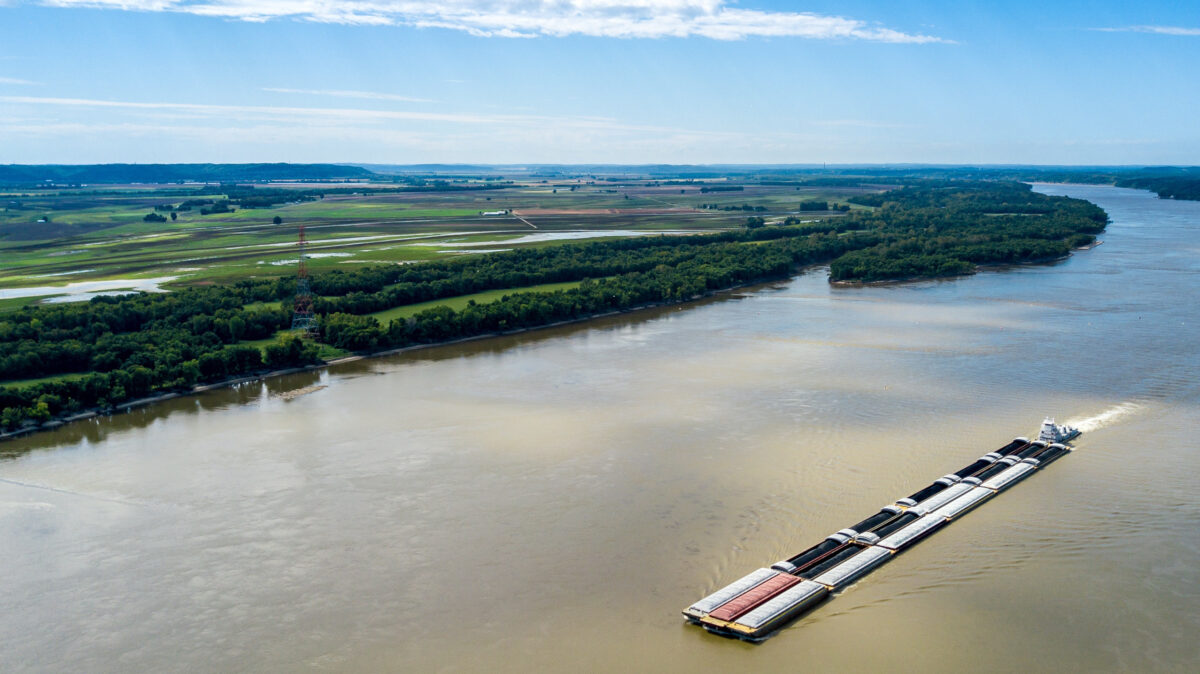Keeping U.S. Farm Goods Flowing into the Global Economy
TOPICS
TransportationMegan Nelson
Economic Analyst

photo credit: Getty
Megan Nelson
Economic Analyst
As farmers and ranchers continue to face tumultuous trade and weather conditions, maintaining global competitiveness is vital for their survival. A new report from USDA’s Agricultural Marketing Service delves into the important role our inland waterway system plays in U.S. agriculture’s effort to remain viable.
The Importance of Inland Waterways examines the economic value of America’s inland waterway system in relation to funding for the U.S. Army Corps of Engineers for the present day, for 2029 and for 2045. The report utilizes Economic Impact Analysis for Planning software to estimate the direct, indirect and induced impacts associated with funding changes over time. The first scenario analyzes the effect of maintaining the funding trends outlined in the president’s budget requests. The second scenario looks at what an increased investment into the waterway system might yield and the third looks at the impact of decreased investments.
Background
America’s immense inland waterway system includes the Mississippi, Missouri, Arkansas, Illinois, Ohio, and Tennessee rivers, which all flow to the Gulf Intracoastal Waterway. According to the report, the total economic impact of the inland waterway system – including indirect impacts – is over 250,000 jobs and $27.2 billion in gross domestic product. From 2013 to 2017, farm products were the largest commodity category in tons per mile of barge traffic, representing 28% of the total. Grain from the Midwest to the Gulf is the leading farm product export, with 76 million tons hauled on 12,893 covered barges in 2018. Corn and soybeans are the predominant commodities, representing over 90% of all downbound grain movements for the past five years. Figure 1 illustrates downbound barge grain movements from 2008 to 2018.

The inland waterway system gives farmers a competitive edge by providing them with a cost-efficient, reliable transportation system for shipping bulk goods and accessing global markets. Transportation costs play an important role in maintaining competitive prices as farmers are price takers and unable to pass on price increases further along the supply chain. The report indicates the advantage the inland waterway system gives U.S. farmers amounts to $5.35 per metric ton over Brazil when it comes to exporting grains and soybeans from Iowa to China. However, if current spending trends were to continue through 2045, this competitive advantage would drop to $3.03 per metric ton. This estimate does not include any improvements Brazil might make in that same time frame.
The Three Scenarios – Status Quo, Increase, or Decrease
Status Quo
USDA’s report indicates that by simply maintaining status quo investment levels (i.e., no new construction or additional dredging), the volume of farm product barge transit would decrease 3 percentage points from 28% today to 25% by 2029. By 2045, estimated employment associated with the inland waterway system would increase to nearly 395,000 jobs and $54 billion in U.S. GDP. Barge traffic delays would continue to increase as the waterway infrastructure deteriorates with no new construction projects.
Increase
Increased investment in the inland waterway system would result in rehabilitation projects, as well as new and improved infrastructure. The reduction in delays, lower freight rates and, in turn, the higher returns to farmers are estimated to lead to an increase of the market value of corn and soybeans by $39 billion from status quo investment levels. The report estimates that to meet all volume, maintenance and upgrade needs of the inland waterway system, a total investment of $6.3 billion over 10 years would be necessary. This level of investment, relative to the status quo level, would increase employment 11% and contribute $41 billion to GDP by 2029.
Decrease
Decreased investment in inland waterways, according to the report, would result in no new construction or rehabilitation projects in the next 26 years. A decreased investment, relative to maintaining the status quo, is estimated to decrease farm product volumes moving on the waterway system 20% by 2045. This loss in volume, due to the rapid increase of delays and system failures, is associated with a 7% decline in GDP by 2029, and an 18% decline by 2045.
Figures 2 and 3 illustrate the percentage change in employment and GDP, relative to the status quo, with increases or decreases in investment for the inland waterway system.


Summary
Consisting of nearly 12,000 miles of navigable channels and 193 lock sites and 239 locks, inland waterways carried 94.8 million tons of farm products in 2017 alone. While overall barge traffic has grown, outdated and failing infrastructure has given rise to more frequent delays, amounting to more than $44 million in additional costs per year. As the waterway system fails to keep pace with the marketplace, farmers will receive a lower price for goods shipped, resulting in lower farm income.
Our inland waterways are not only a national treasure, they also act as the arteries to the heart of the global economy for U.S. farmers. Increased investment in this crucial infrastructure will help keep costs down for the end user, increase prices paid to farmers and boost U.S. grains and soybean competitiveness in global markets.